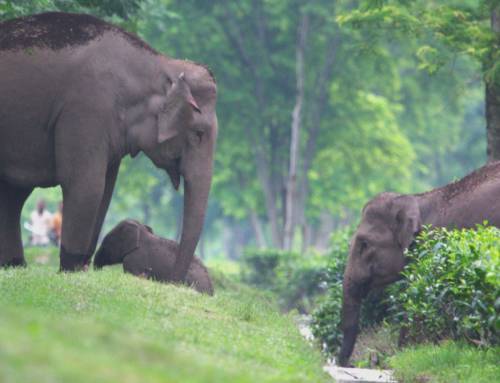Research Article: Athreya, V., Navya, R., Punjabi, G.A., Linnell, J.D.C., Odden, M., Khetarpal, S. & Karanth, K.U. (2014) Movement and activity pattern of a collared tigress in a human-dominated landscape in central India. Published in Tropical Conservation Science.
Blog Author: Aishwarya Anilkumar
Key highlights
- Tigers (Panthera tigris) are a wide-ranging species, and habitats outside protected areas (PAs) are extremely important for their dispersal.
- The last century has dramatically changed and impacted the tiger’s landscape, with a range collapse of 93% due to habitat loss, prey depletion and direct hunting.
- Scientists monitored a tigress after she was rescued from an irrigation canal and then released nearby in a forest patch in Central India.
- Intensive monitoring of the tigress showed that she used 400 km2 of human-dominated areas. This encompassed forests, grasslands, fallow land, plantation, reed bed, stream or river beds and agricultural fields in populated human-inhabitant landscape.
A species’ range is the area where a particular species can be found during its lifetime. Tigers (Panthera tigris) are wide-ranging species, and habitats outside protected areas (PAs) are extremely important for their dispersal. The last century has dramatically changed and impacted the tiger’s landscape with a range collapse of 93% due to habitat loss, prey depletion, and direct hunting. An expanding human population has put increased pressure on the tiger’s habitat and prey. Although scarce, knowledge on how tigers behave in human-dominated landscapes is very crucial.
Scientists from the Centre for Wildlife Studies, Norwegian Institute for Nature Research and Hedmark University College monitored a tigress after she was rescued from an irrigation canal and then released nearby in a forest patch in Central India. The tigress had fallen into a duct of an irrigation canal. She was tranquilised, captured and treated in captivity for nearly 45 days. After the tigress recovered, she was radio-collared to monitor her habitat use, activity budget, and movement patterns. She was then released to a protected forested patch in the Nagpur district.
This pivotal study showed that the collared tigress’s range was extensive. During the three months of intensive monitoring, she used 400 km2 of human-dominated areas. This encompassed forests, grasslands, fallow land, plantation, reed bed, stream or river beds and agricultural fields in populated human-inhabitant landscape. This indicated that the tigress used both forested and non-forested areas. She rarely moved in the day and was active mainly at night. Although she would cross agricultural fields at night and cross railway tracks and highways, the data showed that she was rarely close to villages.
The focus on tiger research has largely been inside PAs where human presence is usually low. Although based on a single tigress, the radio-collaring data in this critical study emphasises our lack of information on large felid (cat family) ecology and behaviour outside of PAs in India. This is particularly relevant to issues of conflict as well as dispersal between PAs. In India, there are reports of tigers having travelled over 200 kms, making it inevitable that they will use human-dominated areas to move between PAs. This study recommends further research on ecology and interactions between large felids and humans to better understand large felid use of human-dominated landscapes better, and minimise large felid conflict with humans.
Keywords: Species range, Tigers (Panthera tigris), Radio Collar, Protected Areas, Home Range.
You can access the original article here.




